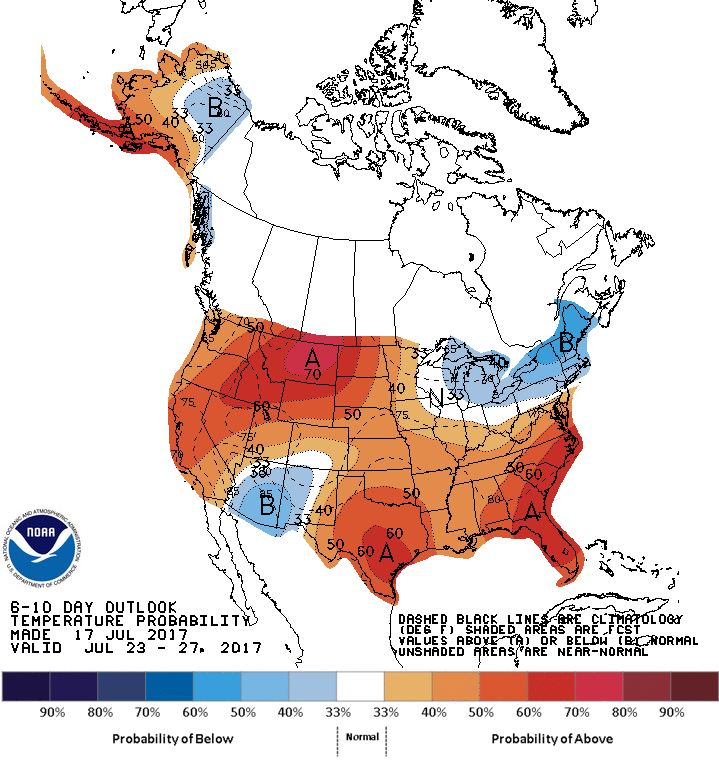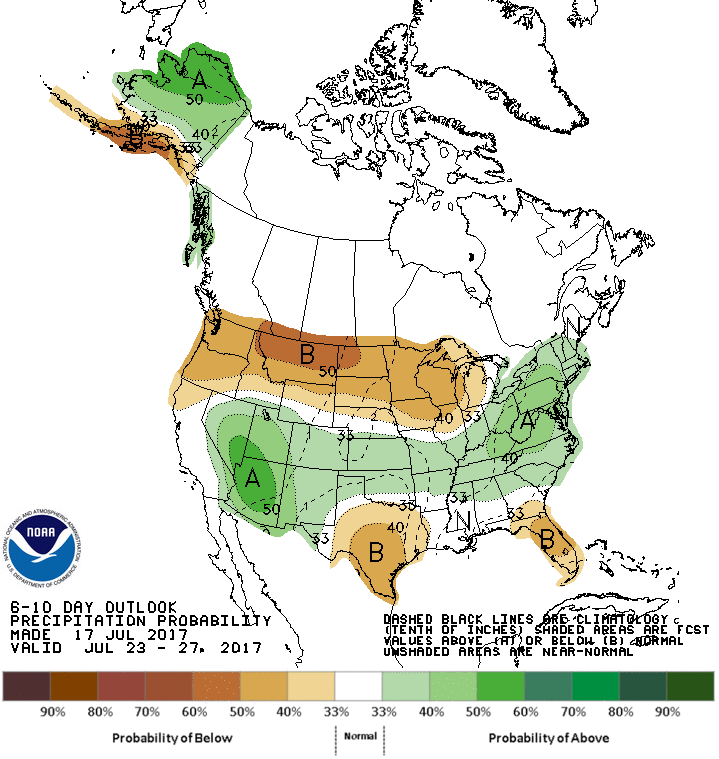Winter wheat harvest in the 18 states is 75 percent complete, two points ahead of average. Kansas is 98 percent and Nebraska, 83 percent - well ahead of the average of 58 percent for this time. USDA’s August crop report should begin to reflect actual yields. Protein levels appear about the same as last year.
Most of the spring wheat crop is heading and running about two to three percentage points ahead of average. Only Idaho, at 78 percent is behind normal (92 percent).
Overall, the six reporting states are rated 34 percent in the good/excellent categories, but South Dakota is only 8 percent. On the lower end of the scale, the crop is 41 percent poor/very poor, with South Dakota leading at 74 percent.
Corn and Beans
The corn crop in the 18 reported states continues to lag its average pace, with 40 percent silking as of July 16, seven points short of average. That could be good news if the extreme heat abates as the remainder of the crop begins silking. However, Nebraska is unlikely to benefit: It is close to its average silking rate and the drought in South Dakota is creeping south. In South Dakota, some experts expect this to be a critical week for those wondering if they will have corn to harvest.
Corn’s ratings worsened one point from the prior week at each end of the range.
| CORN |
Poor/very poor (percent)
|
Good/excellent(percent)
|
Silking (percent)
|
Silking (average percent)
|
| 18 states |
11
|
64
|
40
|
47
|
| Iowa |
6
|
71
|
37
|
45
|
| Kansas |
10
|
59
|
55
|
59
|
| Nebraska |
12
|
65
|
47
|
48
|
| South Dakota |
28
|
30
|
11
|
26
|
| SOYBEANS |
Poor/very poor (percent)
|
Good/excellent(percent)
|
Blooming (percent)
|
Blooming (average)
|
| 18 states |
11
|
61
|
52
|
51
|
| Iowa |
10
|
63
|
54
|
53
|
| Kansas |
6
|
59
|
44
|
34
|
| Nebraska |
12
|
63
|
66
|
56
|
| South Dakota |
33
|
29
|
49
|
57
|
Soybeans are mixed in terms of development. While the 18 states and Iowa are one point ahead of average, Kansas and Nebraska are 10 points ahead. South Dakota is eight behind.
This matches our observations from travels across the FCSAmerica territory. Beans on one side of a road can look healthy, while the crop on the other side appears to be hampered by the weather.
The deficits in the Western Corn Belt are expected to be offset by better crop conditions in the Eastern Corn Belt, with many anticipating an average crop overall. In its July 12 reports, USDA left its corn yield at trend – 170.7 bu. Per acre and actually raised production due to more planted acres.
Soybeans saw the same adjustments: Yields were left unchanged at 48 bu/acre and harvested acres was increased slightly.
For its estimates, USDA employs harvested-area weighted precipitation for the major corn producing states. While June’s was below normal, it did not represent an extreme deviation from average, according to USDA.
Weather
Markets reacted modestly to the Climate Prediction Center’s July 23-27 forecast for above-normal temperatures and greater likelihood of higher-than-normal rainfall, including in the lower Midwest, where rain would be welcome.


Maps Source: http://www.cpc.ncep.noaa.gov/products/predictions/610day/
But markets may remain on edge. The forecast for July 25-31 shifts the odds toward dryness extending into northern Texas and along the Shenandoah Mountains.
How much and how long prices might rally on weather worries could be limited, however. USDA’s Grain Stocks report indicated ample 2016 supplies still to be moved. FCSAmerica lenders report that although some old-crop has moved on recent price strength, piles on the ground still exist in many parts of our territory.

